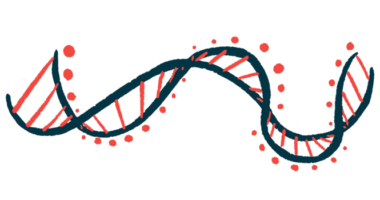Deal aimed at developing therapy to fight toxic protein in ALS, FTD
Transition Bio eligible for up to $500M from Voyager if milestones are met

Transition Bio and Voyager Therapeutics are teaming up to discover and develop new small molecules that target the abnormal accumulation of TDP-43 clumps, a hallmark feature of amyotrophic lateral sclerosis (ALS) and frontotemporal dementia (FTD).
Under the terms of the agreement, Transition Bio will lead the discovery and optimization of small molecules targeting the TDP-43 protein. Once a development candidate is identified, Voyager will have the option to obtain worldwide exclusive rights to further develop and commercialize the experimental therapy.
“By working closely with the Voyager team, we will be able to leverage a world-leading translational team with deep expertise in ALS and FTD,” G. Kelly Martin, executive chairman of Transition Bio, said in a Voyager press release. “We look forward to advancing this program together to achieve our shared goal of transforming the lives of patients with these devastating diseases.”
Toxic protein clumps seen in about 97% of ALS cases
ALS and FTD are two neurodegenerative disorders that share a common biological feature: the abnormal buildup of TDP-43 aggregates, which are toxic to the nerve cells. These protein clumps are seen in about 97% of all ALS cases and about 50% of people with FTD, a form of dementia that is biologically related to ALS.
TDP-43 is a key protein that helps regulate protein production by modifying messenger RNA. This intermediary molecule is produced when a gene is read and carries the genetic information to the cell’s protein-making machinery.
In ALS and FTD, however, TDP-43 is often abnormal and prone to forming abnormal clumps. These toxic deposits disrupt essential cellular processes and can also spread between nerve cells, contributing to disease progression.
Targeting the toxic forms of TDP-43 without affecting normal TDP-43 proteins has been a major therapeutic challenge.
“Historically, TDP-43 has been difficult to address therapeutically because of the complexity of targeting toxic forms of the protein without impacting the nontoxic forms that are necessary to the cell,” said Alfred W. Sandrock, Jr., MD, PhD, president and CEO of Voyager and member of the Transition Bio board of directors.
The new partnership will leverage Transition Bio’s molecular condensate technology to better understand and correct how TDP-43 behaves inside cells.
Transition Bio’s molecular condensate technology uniquely identifies small molecules that aim to precisely correct the mislocalization of TDP-43 without abolishing its important functional activity.
Under normal conditions, TDP-43 forms condensates — membraneless regions within specific cellular structures with specialized functions — within the nucleus. In ALS and FTD, however, TDP-43 forms clumps in the cytoplasm, which prevent it from reaching the nucleus.
Transition Bio will explore these biomolecular condensates to identify small molecules capable of restoring TDP-43’s typical localization in the nucleus.
“Transition Bio’s molecular condensate technology uniquely identifies small molecules that aim to precisely correct the mislocalization of TDP-43 without abolishing its important functional activity,” Sandrock said.
Under the agreement, Transition Bio has received several million dollars from Voyager upfront and is eligible for up to an additional $500 million if certain research, development, commercial, and net sales milestones are met. The company may also receive royalties on net sales if one of its small molecules is ultimately approved for use.







